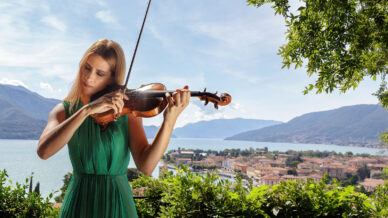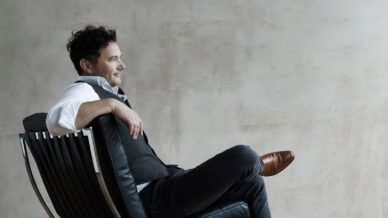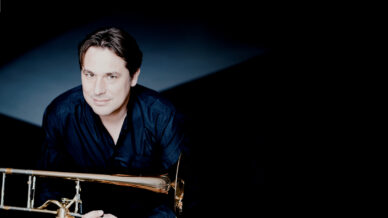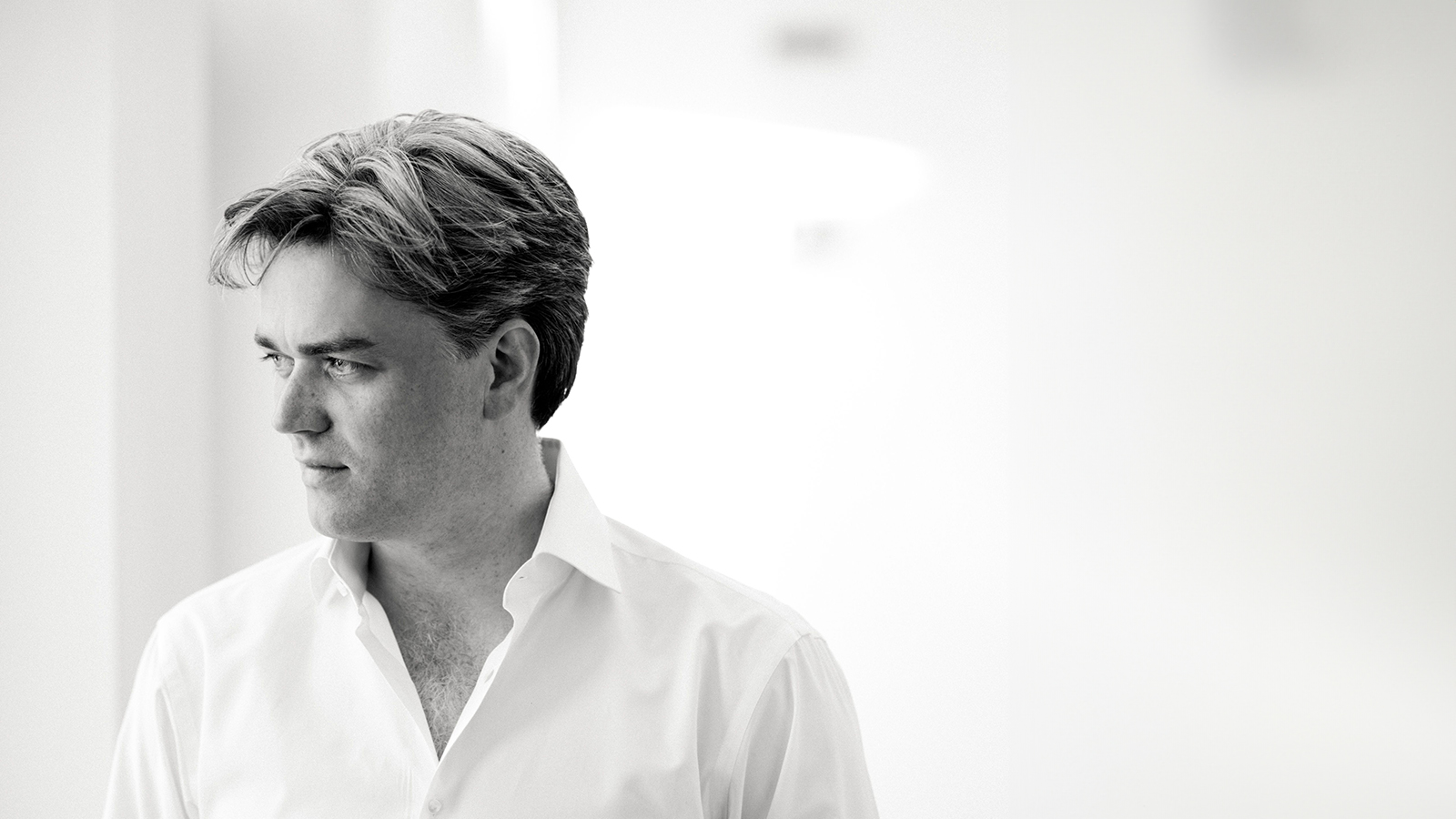

Stravinsky and Tchaikovsky
septiembre 12 – 14, 2024
EDWARD GARDNER lleva a cabo
STRAVINSKY Petrushka (1947)
TCHAIKOVSKY Sinfonía nº 4
Immerse yourself in powerful emotions as Edward Gardner, Principal Conductor of the London Philharmonic Orchestra, leads the DSO in the first classical concert of the season. Tchaikovsky fills the bill in his Fourth Symphony with powerful brasses, whirlwinds of strings and poignant melancholy where he confesses, “there is not a single bar which I have not truly felt, and which is not an echo of my most intimate spiritual life…” Equally compelling is Stravinsky’s tragic love-triangle among puppets at a Russian Shrovetide fair, told in a brand-new musical language of complex rhythms, offbeat meters and edgy harmonies that will leave you positively enthralled.
PRELUDIOS DE ACTUACIÓN
Join us for a special pre-concert talk with Assistant Conductor Shira Samuels-Shragg! The talks will take place from Horchow Hall starting at 6:30pm on Thursday and Saturday.

Our Dallas Symphony Young Professionals will be in attendance to this performance on September 12, 2024. Learn more about how to become involved in DSO YP aquí!

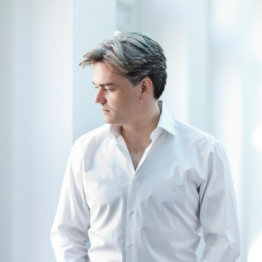
Notas del programa
por René Spencer Saller
Petrushka, Igor Stravinsky’s second ballet, began as a concert piece for piano and orchestra. It began to take shape in 1910, shortly after the successful premiere of The Firebird, which the Saint Petersburg native had composed for Sergei Diaghilev and his Ballets Russes. Instead of beginning the ballet he’d promised the impresario—The Rite of Spring—Stravinsky was sidetracked by the mental image of a puppet “suddenly endowed with life, exasperating the patience of the orchestra with diabolic cascades of arpeggios,” as he later wrote. “The outcome is a terrific noise which reaches its climax and ends in the sorrowful and querulous collapse of the poor puppet.”
After hearing the piano sketches, Diaghilev urged Stravinsky to recast the music into a ballet. He worked on the project between August 1910 and May 1911, in Lausanne and Clarens, Switzerland; Beaulieu, France; and Rome. Pierre Monteux conducted the premiere, performed by Les Ballets Russes at the Théâtre du Châtelet, Paris, on June 13, 1911. Petrushka was an unqualified success, earning rave reviews from critics and audiences alike.
Stravinsky dedicated the score to Alexandre Benois, who created the scenario, scenery and costumes and is credited on the title page as co-author of these “scènes burlesques.” Michel Fokine’s choreography tested the dancers’ patience, stamina and sense of timing; rehearsals involved torturous mathematical breakdowns of Stravinsky’s intricate rhythms.
Set in 1830s Saint Petersburg, during Mardi Gras, the scenario hinges on a tragicomic ménage à trois involving three enchanted puppets, in thrall to a magician who has supplied them with human emotions. The action begins at the Shrovetide Fair, a boisterous pre-Lenten street party evoked by twittering winds and a tinkling triangle. Announced by a drum, the magician enters with his three quasi-human puppets: Petrushka, a pathetic clown; the Ballerina, pretty and winsome; and the savage, sexy Moor. This motley trio performs a frenzied Russian dance. Next, the scene shifts to the clown’s meager room, where he weeps and rages over his enslavement before being joined by the Ballerina, who rejects his clumsy advances. In this scene we first hear the famous Petrushka chord: an alarming C over F-sharp that Stravinsky described as a “dual tonality.” Throughout the work Stravinsky deploys many unexpected harmonic effects and strategic disruptions, including liberal use of the octatonic scale, a pattern of eight pitches that alternate among half-steps and whole-steps within the octave.
In the third tableau, the desperate clown barges into the Moor’s room, where he discovers his nemesis embracing the Ballerina. Petrushka goes berserk, the Ballerina faints and the Moor shoves Petrushka out the door. In the final scene the puppets return to the fair, where, in the chaos of contrasting dances, the Moor slashes at Petrushka with his scimitar and flees with the Ballerina. While the magician tries to reassure the gobsmacked crowd that the dying clown is only a puppet, Petrushka’s ghost shows up to sass them one last time. “I wanted the dialogue for trumpets in two keys at the end to show that [Petrushka’s] ghost is still insulting the public,” Stravinsky wrote. “I was, and am, more proud of these last pages than of anything else in the score.”
In 1946–47 Stravinsky revised the ballet’s instrumentation so that he could copyright the music and make it more dynamic as a concert piece. He corrected several errors that he had noticed in previous performances and score editions, and he reduced the original instrumentation, toning down the brass and woodwinds while boosting the piano’s prominence. The Dallas Symphony performs the revised version tonight.
Habla el compositor
“As for myself, I experience a sort of terror when, at the moment of setting to work and finding myself before the infinitude of possibilities that present themselves, I have the feeling that everything is permissible to me.
“If everything is permissible to me, the best and the worst; if nothing offers me any resistance, then any effort is inconceivable and I cannot use anything as a basis, and consequently every undertaking becomes futile.
“Will I then have to lose myself in this abyss of freedom? To what shall I cling in order to escape the dizziness that seizes me before the virtuality of this infinitude? However, I shall not succumb.
“I shall overcome my terror and shall be reassured by the thought that I have the seven notes of the scale and its chromatic intervals at my disposal, that strong and weak accents are within my reach, and that in all of these I possess solid and concrete elements which offer me a field of experience just as vast as the upsetting and dizzy infinitude that had just frightened me. It is into this field that I shall sink my roots, fully convinced that combinations which have at their disposal 12 sounds in each octave and all possible rhythmic varieties promise me riches that all the activity of human will never exhaust.” —Igor Stravinsky, Poetics of Music in the Form of Six Lessons.
For Tchaikovsky, music brought solace in a life stained by misery, rage and shame. He gave his patron a written program for the symphony he dedicated to her, but only because she requested it; he preferred to let Symphony No. 4 tell its own story, free of all extramusical baggage. At any rate, he wasn’t free to discuss his deepest, most authentic desires and could barely bring himself to acknowledge them most of the time.
Despite his gigantic talent, Tchaikovsky suffered from chronic self-loathing. He was deeply conflicted: a conventionally religious man who couldn’t repress his homosexuality, no matter how hard he tried. He channeled his frustrations into his work, but like most relentless perfectionists, he was rarely satisfied. He tried to kill himself at least once, during his brief and catastrophic marriage, and some historians have suggested that his sudden death, at age 53, might have been a form of suicide. Others maintain that he simply contracted cholera, which was widespread at the time.
Today Symphony No. 4 in F minor is standard orchestral repertoire, cherished by audiences and musicians alike. But for years after its 1878 premiere it was widely disparaged. Even as late as 1890, it was mocked as barbaric, monstrous. One disdainful New York critic opined, “There is an extraordinary variety in the orchestral colors, some of which are decidedly too loud for a symphony. If Tchaikovsky had called his Symphony A Sleigh Ride Through Siberia no one would have found this title inappropriate.”
The tonal extremes seem entirely consistent with the composer’s life in the melodramatic months leading up to the Fourth’s completion. On June 1, 1877, he visited Antonina Milyukova for the first time. A student at the Moscow Conservatory, where Tchaikovsky had been teaching for the past decade, Milyukova had been sending him letters threatening suicide if he rejected her. Despite his professed “innate aversion to marriage,” he proposed two days after their initial meeting, and they married that July. Two months later, he tried to kill himself by wading out into the ice-clogged Moscow River.
With help from his younger brother Anatoly and a Saint Petersburg psychiatrist, Tchaikovsky freed himself from his unhappy marriage. He spent the next several months traveling in Europe: Paris, Vienna and all over Italy. He managed to finish both the Fourth Symphony and the opera Eugene Onegin. He also received some life-altering news: Nadezdha von Meck, his enigmatic new patron, promised to send him an annual stipend large enough to let him resign from the Conservatory and compose full time. For the next 14 years, he and the wealthy widow exchanged hundreds of remarkably intimate letters without ever meeting in person—by her stated preference, and to his secret relief.
Una escucha más atenta
Dedicated to his elusive new “best friend,” Symphony No. 4 in F minor is a watershed moment in Tchaikovsky’s career. Although his first three symphonies are impressive achievements, it wasn’t until his Fourth Symphony that he came into his own as a composer. Ever subtle, ever ambivalent, Tchaikovsky preferred as much interpretive leeway as possible.
On the one hand, there’s his so-called “Fate” motif, the insistent brass-driven reminder that we cannot live in the beautiful world of our dreams—not for long, anyway. In a letter to von Meck, the composer wrote, “The introduction is the seed of the whole symphony, undoubtedly the main idea. This is fate, that fatal force which prevents the impulse to happiness from attaining its goal, which jealously ensures that peace and happiness shall not be complete and unclouded, which hangs above your head like the sword of Damocles, and unwaveringly, constantly poisons the soul.”
On the other hand, his music was an outlet for emotions so personal and so otherwise inexpressible that he was loath to get too specific. In a letter to his pupil Sergei Taneyev, he explained that “of course my symphony has a program, but of a kind impossible to formulate in words…. Was it not the purpose of the symphony as a musical form to express that for which there are no words, but which surges from the soul and demands expression?…[T]here is not a single line in my symphony which I have not felt deeply, and which does not echo true and sincere emotions.”
The third movement, which he called “a series of capricious arabesques,” conveys a mood of lightness and euphoria, but it’s the giddiness of a slaphappy child moments before exhaustion sets in. The music, Tchaikovsky wrote, is the kind “heard after one has begun to drink a little wine and is beginning to experience the first phase of intoxication. You are not thinking of anything. The imagination is completely free and for some reason has begun to paint curious pictures…disconnected images pass through our heads as we begin to fall asleep.”
Like Beethoven’s Fifth, Tchaikovsky’s Fourth moves from darkness into light, from minor to major, from sorrow to celebration. In his letter to von Meck, he described the symphony’s fiery finale as a moral imperative: “If you cannot discover reasons for happiness in yourself, look at others. Get out among the people. Look what a good time they have simply surrendering themselves to joy.”
